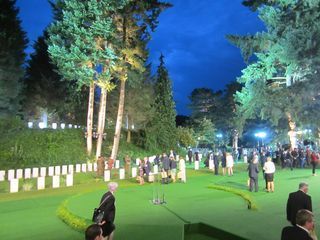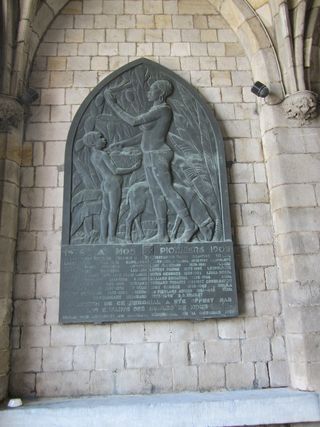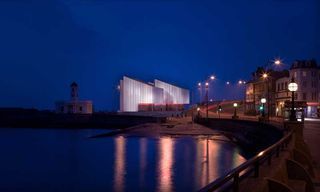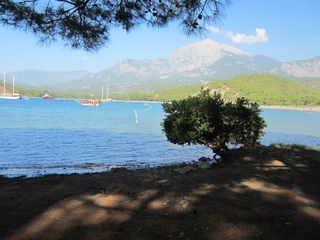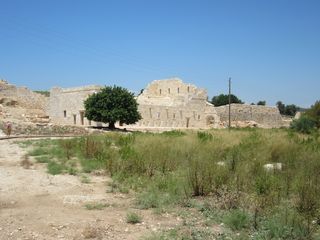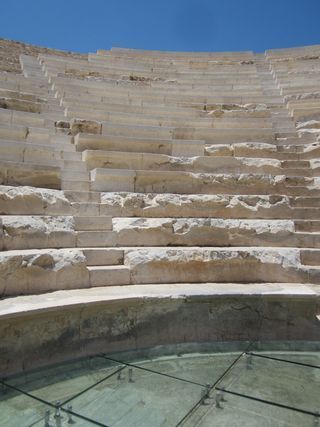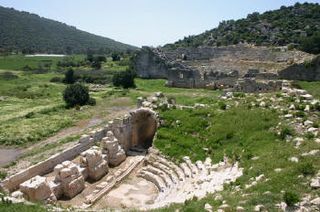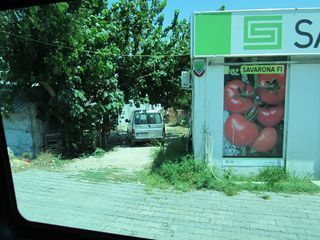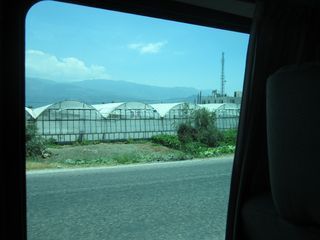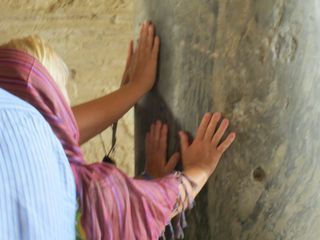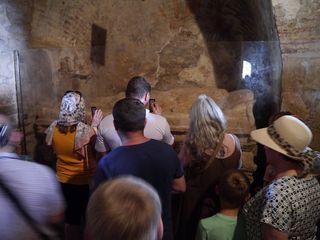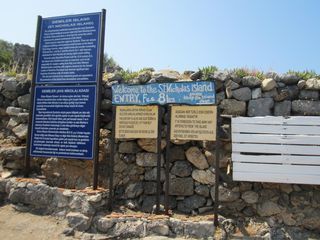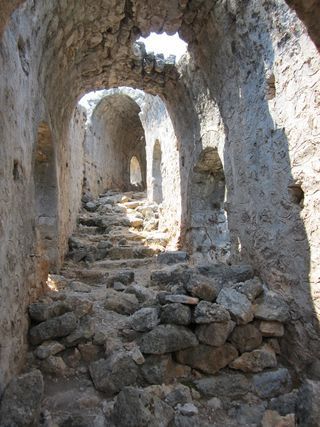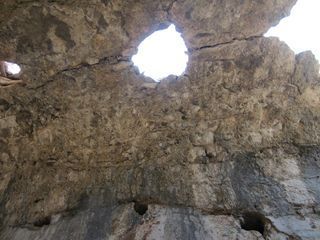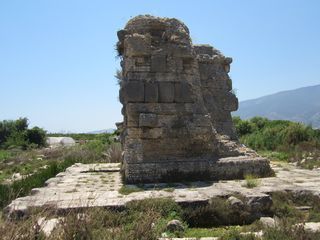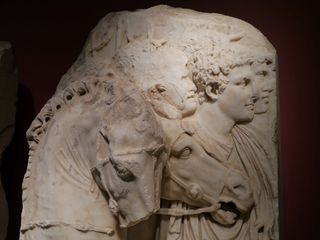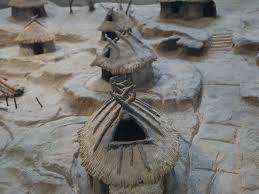Mary Beard's Blog, page 32
August 7, 2014
Scotland adieu?
I have come in for a bit of flak today (and a few -- but rather fewer -- pats on the back) for signing THAT LETTER about the Scottish referendum.
Let me say that I am usually not a great signer of round robins or on-line petitions (I admit that have seen them work but I still have a slightly puritanical view that it is a rather "no effort" way of getting your point across). So why did I make an exception?
The truth is that I have been feeling very ambivalent about the referendum discussion. On the one hand, I have winced every time Cameron et al have put their oar in to the debate, to urge the Scots to vote NO. It has always sounded condescending and -- to be honest -- would have sent me instantly voting in the opposite direction if I had had a vote to cast. The bottom line is that this decision is for the Scots: and that's that; non-negotiable.
On the other hand, there are obvious ways in which England, Wales and Northern Ireland will be affected by a Scottish vote for independence -- in my view for the worse. And I do feel some obligation to say (take it or leave it) that I would miss Scotland, and think that the society of what had been the UK would be impoverished by the split. (I'm thinking, among other things, about political, cultural traditions and pressures; about the distinctive contribution of a particular form of Scottish intellectual socialism and political radicalism, and so on.)
My reaction is partly a selfish one, I admit. I think that "the rump" would be worse off without Scotland, and the political decisions we take would be liable to be less enlightened. But I also think, less selfishly, that the force of our joint combination on the European and world stage is likely to be more effective if we are together; that we are a good team.
I know full well that it is not for me to decide. And it's precisely because this letter said exactly that ("the decision is yours alone") -- and because it said clearly that the signatories valued the union (without going on to tell Scotland what was good for it, or how the Euro wouldnt work, or how Salmond's promises were unsustainable) -- that I felt I wanted to sign.
In a funny way, it seems to me a bit like a strange, blown-up version of a non-acrimonious divorce (I'm sure I'll get into trouble for this analogy, but I will use it anyway, as it does capture a bit of my motivations. The fact that it is a domestic comparison is not intended to trivialise -- precisely the reverse.).
It feels rather as if my long term husband was going ahead with a separation. We haven't been getting on all that well, and my own behaviour hasn't been perfect. Things aren't all that bad, but he thinks he'd be better on his own -- and anyway, he's only going round the corner, so we can still have the odd meal together, Christmas with the kids etc. No total split. We've been talking a lot about the practicalities, paying off the mortgage, splitting the bank accounts. All very civilised. One thing I have not said is that I am going to miss him like hell and dont want him to go, Maybe, I eventually reflect, he doesnt even know that I'd love him to stay. I fully accept that leaving has to be entirely his decision, but shouldn't I just have said out loud that I'm really sad about it (and not just about the money).
I signed that letter because I wanted to say just that: it is none of my business to interfere but, speaking from the heart, I really hope we stay together. Nothing more sinister (or profound) than that.
August 5, 2014
St Symphorien: making up not breaking up
I was dead lucky last night, as I got to go to the WW1 commemorative event at the cemetery at St Symphorien, just outside Mons in Belgium. The reason is that I have been, for a few months now, on the Government Advisory Committee for the Commemoration of WW1, and the members could more or less choose which of the big three August 4 events to go to. I felt that -- despite the time and considerable expense -- I was only going to feel really comfortable and at home in a commemoration that involved men and women from the different "sides" in the War: where we could celebrate reconciliation and be thankful that we were, for the most part, no longer killing each other in Western Europe (I'm choosing my words carefully).
Besides, I had been to St Symphorien on a reccy a few months ago and found it extremely moving. It is, I think, the only WW1 cemetery which has both Commonwealth and German graves, in roughly equal numbers.
Anyway on this occasion there were about 500 people in the audience, some the relatives of those buried (both German and Commonwealth), lots of soldiers from all over the place, local people and some royals and senior politicians. There was Kate, Wills and Harry, plus Cameron and the Archbishop of Canterbury -- not to mention the King and Queen of the Belgians, the Presidents of Ireland, Germany, the European Commission, and so on .... Or so the programme said. To be honest, though I know their names, I dont have much facial recognition on European royalty and top brass politicians (I can't honestly, at sight, tell my King Philippe from my Manuel Barroso).
The whole commemoration lasted about an hour; it was excellently choreographed by Nicholas Kenyon (presented by Dan Snow) and featured recollections, music and performances, British, Commonwealth and German. Everything was sub-titled in German or English on the big screens. Even in the tea tent, there were two military bands: one British, one German.
It was extremely moving -- and, as I hope you see from my pictures, beautiful. It all happened over a glorious sunset, and the performances used the extraordinary space of the cemetery, which is full of glades, hillocks (it is on the site of an old phosphate mine) and little "clusters" of tombs from different regiments and nationalities. The aesthetic is very different from the more ordered feel of the usual Commonwealth War Graves cemeteries.
The emotional highlights of the commemoration for me were the German cellist. Jan Vogler, playing Bach in one of the glades (that's him with the Kenyons on the right, with his cello on his back), the great-niece of John Parr (the first British casuality) reading the letter that Parr's mother wrote to the War Office trying to find out what had happened to him after she hadn't heard of him for 10 weeks, and the band playing wartime soldiers' songs, German and English ("It's a long way to Tipperary". "Muss ich denn"). But it's hard to pick favourites.
It was also rather touching to see great fraternisination going on afterward between the serviceman of the different nations, with some splendid kilts brushing against the rather less flamboyant German blue (I just hope they werent swapping notes on the latest hardware).
To be honest there was hardly a jarring note. Though I rather wish that David Cameron had resisted the understandable temptation to say that we were resisting "the domination of a continent"; if that was for anyone to say, it was for the President of Germany and he had already said as much at Liège that morning. And, frankly, I think I shall go to my own grave finding some aspects of military goings-on a bit "not my cup of tea" (why soldiers can't hand over flowers or lamps between each other without clicking their heels and saluting, beats me -- but there you go).
But the reconciliation theme really did come over loud and clear, as well the evenhandedness across te nations. And with any luck that will go on as the four years of commemoration continue (maybe it should be a rule that we dont remember the British dead, without remembering the dead of some other country -- after all we didnt sustain the worst losses).
And maybe it will be the start of our thinking a bit harder about the continuing impact of World War 1 -- and in a more complicated way. There were two significant vignettes of this at St Symphorien and in Mons.
In the goody bag we got there was a wonderful book celebrating the work of the Commonwealth War Graves Commission. I flipped through it while we were waiting for the royals and co to do all their hand shaking. It explained how many graves the commission looks after and where they are. Amongst hundreds of thousands, there are over 3000 graves in Gaza from WW1. Heaven knows what state they are in at this very minute, but their presence there (after the British took Gaza city in 1917) is a hint of a complicated story of conflict in that region which reaches down a century.
And in Mons town centre there is an extraordinary bronze relief at the entrance to the Town Hall.
It commemorates what was then, just a few years before the start of the war, taken by the citizens of Mons to be Belgium's fine record of generosity to the people of the Congo. It's odd how when we recall how we went to the rescue of plucky little Belgium, invaded by Germany, we dont tend to mention what atrocities had been going on, in Belgium's name, in the Congo.
That's not to say that we should not therefore have gone to Belgium's defence. It is to say that the rights and wrongs of the world in 1914 were a lot more complicated than we tend to allow.
After all a lot of Indians believe that India was fighting against Britain in WW1. I wonder why.
August 3, 2014
Any Questions in Margate
I have spent the last few days mugging up about world politics, and on lwhat's been going on in Kent. That's because I was down to do a (non-political) AnyQuestions in Margate with Clive Aslet, Richard Dannatt, and Rod Liddle. And you don't turn up to do AQ without trying to find out what's going on in the place you're visiting. It's partly because it would be insulting to the audience no to. It's partly because you dont want a question thrown at you that refers to a local issue you have never heard of. Try dealing with a discussion on A and E provision when you havent caught up with the fact that there are plans to close the local hospital.
Let me admit (to my shame) that I had never been to Margate before -- and that it is just unbelievably beautiful (if a trifle whiffy from the "ozone" at times). And the Turner Contemporary (where we were based) is a gallery to die for. We did our programme from a room with a bank of windows overlooking the sea, and I have to say that I have never discussed, or spoken, from a more amazingly scenic venue (Certainly intending to go back to Turner Contemporary. And I'll also be going to what looked like an excellent gallery shop?). The beach looked pretty good too.
Anyway I spent far too much time mugging up for the programme, as I always do.
The truth about AQ is that it is like taking an exam, with all the question spotting that involves. As for the local issues, I had thought the questioners might be keen on the controversy about the closure, and possible buy out, of the local airport. So I had done loads of work on Manston Airport (aka Kent International). And I could, utterly nerdishly, tell you the owners of the place over the last 20 years, the low cost airlines that had tried to make a profit there, and all to no avail. It has now shut, and there is an interesting rescue package afoot, and I had read the whole of the recent business report. The trouble was that, after all that reading, I couldnt work out which side I was on: was this an airport in a hopeless place that could never possibly be a commercial success? or was it a serious rival for Boris's island or Heathrow's third runway. So maybe it was good that there were no questions on the subject!
On the programme, we had a reasonably feisty time -- out of which I dont know how well I came (and to be honest I thought we were all a bit judiciously low key, even Rod). And I did get some of my current "points" across, including about the WW1 commemoration. I am dead keen on these and think that if we knew more about WW1 and its aftermath, we would understand the modern world better, and we certainly wouldn't blunder about the Middle East in quite the blithe way we sometimes seem to. But I would like our commemoration to be a bit more international -- including the experience of the Germans and beyond the Western Front. (Like: lets remember the 1.4 million Indians who served.. and maybe lets remember the enemy, many of whom were as conscripted as our "boys" were.. and maybe remember the war poets of other countries, who wrote some pretty damn good stuff too).
There had been a few attempts in the run up to parade this AQ as a grudge match between me and Rod Liddle. (Try looking at the comments under the line in that last link if you want an eye-opener). As it happened, we agree on quite a few things (like Ukraine) and disagree strongly on one or two others. There was indeed a question about migration. And the discussion boiled down to whether the wages of British born workers were decreased because of immigration, and whether "British" jobs were being lost because of it. The difficulty is that we each rely on reports that tend to reinforce our own points of view. Rod cites those that say that the "bottom" 20% of UK workers, in terms of earnings, are disadvantaged. I cite those that argue that (while accepting particular pockets of difficulty) UK workers are NOT disadvantaged (I got a lot out of this judicious stuff just out from the E Midlands.) And of course, impasse. If, however, I had got the time, I would have wanted to say that the factors affecting the chances of the "bottom" 20% were a lot more complicated that immigration...if it were monocausal, that would be simple.
July 30, 2014
Where do half the world's tomatoes come from?
In this final post from the Turkish coast, let me recommend another couple of sites if you happen to be in the area. First there's Phaselis -- a dinky little Roman town that was given a facelift (like many round  here) by Hadrian or in honour of him. Now it combines a handful of archaeological tourists, with rather more bathers, who charmingly get changed, picnic and sprawl among the ruins (which go pretty much right down to the beach).
here) by Hadrian or in honour of him. Now it combines a handful of archaeological tourists, with rather more bathers, who charmingly get changed, picnic and sprawl among the ruins (which go pretty much right down to the beach).
 A nice case of dual use we all thought (though eschewed the bathing opportunities ourselves).
A nice case of dual use we all thought (though eschewed the bathing opportunities ourselves).
At the other end of the spectrum -- ie very big indeed, though also conveniently located by an appropriately vast beach -- are the ruins of Patara. It's history goes back to Greek period; it was taken by Alexander the Great; but it then became the main town of the "Lycian League" and government seat of Roman Lycia.
An awful lot of it remains unexplored and unexcavated. But there has been some attention from the Turkish parliament, which has paid to restore the Bouleuterion -- the (kind of) parliament building -- of the Lycian League.
This looked pretty dreadful (far too white) from the outside, as I think comes across in this picture (though actually it felt whiter in real life).
Inside it had been rather elegantly done, with a very nice display of the mosaic on the floor.
Though it did come as a bit of a shock to see what it looked like up to a couple of years ago.
I should warn potential visitors, however, that the palatial loos on the site were firmly locked. As one member of our party remarked, they probably hadnt been opened since the visiting Turkish parliamentarians used them at the restoration opening ceremony.
The reason that the Turkish parliament put all that cash into restoring the talking shop of the Lycian League was presumably to make a statement about its own democratic character. In case you are wondering about the politics that I witnessed, it is true that there were loads of posters everywhere for Erdogan and his party; but I didnt spot any for the opposition. Which presumably tells its own tale.
What I did spot however (all around Patara in particular) were acres and acres of polytunnels. Nothing was growing in them in July, but it was clear that they had nurtured almost exclusively tomatoes.
They were a complete eye-sore (like they are in the UK, but there were just so many more of them. The rueful reflection was an obvious one: the desire of western consumers to have food out of season, and the desire of the Turkish agriculture industry to make extra money by producing food out of season, has ended up with swathes of its wonderfully beautiful countryside covered in ugly plastic boxes.
It looks like half the world's (out of season) tomatoes come from here.
July 27, 2014
Pilgrimage to St Nicholas
One of the most extraordinary sights we came across in Turkey was the pilgrimage church of St Nicholas in Demre (ancient Myra).
There is a long association of St Nicholas with the town. He was Bishop of Myra, and died there on 6 December 343. His church became a pilgrimage church, centred around his relics -- until in the eleventh century the relics were nicked (pardon pun) and taken to Bari, where they still are.
The saint was still a ghostly presence in Demre, but recently the touristic allure of the place, was as the birthplace of Father Christmas, rather than as the shrine of a more sober orthodox saint. In fact those in 
 our party who had visited the place a few years ago remembered the Father Christmas side of it. That is still visible in some of the old adornments, such as this (right) Santa Claus plus three grateful children - though the bakelite version (on the left) that used to stand there has apparently been removed, or at least moved..
our party who had visited the place a few years ago remembered the Father Christmas side of it. That is still visible in some of the old adornments, such as this (right) Santa Claus plus three grateful children - though the bakelite version (on the left) that used to stand there has apparently been removed, or at least moved..
It's quite different. The whole place is literally heaving with pious Russian pilgrims, each of whom is shuffling past a coffin, protected by a glass screen, which does not contain the relics of St Nicholas anyway.
We arrived quite early in the morning, and by the time we left around 11.30, there must have been thousands of the faithful already passed through.
It has clearly completely changed the town, where now every shop is geared to Russians, the orthodox church and the Russian language.
What I could not help wondering was how to explain it. I dont think it is being too cynical to says that it can hardly be a spontaneous outpouring of modern Russian piety. Someone is driving it. Someone is providing the pilgrimage packages and making money out of the coaches in which the faithful arrive. But beyond some combination of Mr Putin and the local Chamber of Commerce, we didnt get far on the cui bono question.
What is clear is that others are hoping for a slice of the action. We went also went to visit Gemiler (St Nicholas) Island -- which certainly has a connection with the Saint (one of the churches in the place is dedicated to him), but how strong was a bit uncertain. One idea is that this is actually the place he died and was originally buried.
Be that as it may, there is more to this place that the late antique pilgrimage site that it is claimed to be. The archaeologists in the party thought it looked more like a little late antique town (and they rather felt that one of the so-called churches there wasnt actually a church at all).
The most impressive thing of all though was a long covered ramp leading up some from point unknown near the shore to very close to the church at the top. It's a massive piece of skilled building work (it reminded me a bit of the Palatine ramp in Rome), but what on earth was it for??
If you plan to go, I would make it soon. The fabric is in a very ropey state and looks like it will be very dangerous very soon. Try this vault. It will need more than St Nicholas to keep this in the air.
July 23, 2014
The Antalya Museum -- and the memorial to Gaius Caesar
A few years back I did a few posts on great museums that aren't as well known as they should be (like the Hunterian in Glasgow). Now I have another to add.
The truth is that I have been having a "holiday" on a boat off the south coast of Turkey, but also visiting some of the antiquities. We started from Antalya and ended up in Göcek -- and on the morning before we embarked, we decided to give the Antalya Museum a quick work over.
If you are ever there, don't miss it.
The sheer quantity of rather good Roman sculpture (not especially brilliant, but good nonetheless) tells  you quite a lot about the whole "image-world" of the Eastern provinces. There are just scores of Roman emperors and other greatest hits of ancient sculpture (including - on the left - a "Farnese" Hercules-type -- recently reunited with its upper part that had ended up in Boston).
you quite a lot about the whole "image-world" of the Eastern provinces. There are just scores of Roman emperors and other greatest hits of ancient sculpture (including - on the left - a "Farnese" Hercules-type -- recently reunited with its upper part that had ended up in Boston).
But what struck me (though I honestly should have known about it before) was the sculpture from the cenotaph of young Gaius Caesar, Augustus' would-be heir, who died in Lycia (S Turkey) in 4 AD, after being wounded in Armenia.
This was really, really top-notch.
It's clear that when Gaius died at Limyra his ashes were sent back to Rome, but a whacking Mausoleum was built in the city in which he died (there is a big study of this, I now discover, by Ganzert, 1984). The Mausoleum is pretty wrecked, as you can see from the top of this post. But there are a couple of recently discovered sculptured panels from it on display (one of these above -- apparently found in the structure of a local house). This looks like extraordinarily high quality stuff to me (those wonderful profiles behind that splendid horse) : same level as the Ara Pacis, or the Actian Monument at Nicopolis.
Overall Limyra is a remarkable site, made all the more romantic by the fact that it is now partly waterlogged. It has an interesting post-antique history too. Here you see the outline 
and debris of an early Christian church through the water. And here the young locals are using it as a swimming pool (they are just about to dive in).
There's also a pretty damn good theatre.
All in all a splendid little Lycian town, whose main claim to Roman fame was that the unfortunate young Gaius finally expired there.
July 19, 2014
Fake heaven
Some time ago I did quite a lot of work on plaster casts (mainly of ancient Greek and Roman sculpture). This proved interesting for all kinds of obvious reasons -- who made them, who collected them, etc. But also for the whole question of "originality", "authenicity" and "imitation". Casts turned out to be paradoxical things: copies not fakes (no plaster cast is pretending actually to be what it imitates), but oddly more fragile than the original and sometimes in the case of casts made a couple of hundred years ago (given the deterioration of much ancient sculpture left outside in a polluted environment) in a state closer to the original than the "original" -- if you see what I mean.
In fact, the whole subject is fraught with issues that teeter on the dividing line between authenticity and inauthenticity. One of my favourite phrases -- much used in the nineteenth century -- was "original cast" (which I eventually worked out meant a cast taken directly from the original sculpture, not a cast taken from another cast).
Given all this, you would have thought that I would have had a reasonably sophisticated take on "fake" fashion items. But honestly I have always thought that fake Prada really was pretending to be Prada. And so on.
That is until I visited a queen of fake shops on my holiday (on which more in due course -- but I am not giving away the shop location just in case I caused the nice owner to be raided by the fake police). One of my travelling companions had visited the shop a few days earlier and bpught a "Cartier" watch. Though marked "water resistant", it had resolutely refused to work after she had splashed it with water in the shower.
So she returned to the shop with some mates in tow and politely complained to the shop-man. "What on earth did you expect?" he replied. "Of course it isnt water resistant, it's a fake". He then smiled and gave her a new one, telling her firmly not to get it near the shower.
It turned out that the shop was full of the paradoxes of fakery.
There was no pretence that we were buying the real thing, though the products were amazingly good lookalikes. "I even make the authenticity cards, myself", the man claimed. "And I give each back my own serial number, just like the real ones" (Anyone who has ever bought a posh bag will know that they come with certificates of authenticity and an identity number.)
And he had a wonderful line in Hermès carrier bags, into which the fake Hermès products were carefully inserted, tissue wrapped.
I decided to be relatively modest. But when you see me walking round with my new red "Tods" handbag, you'll know that it's my "original fake".
July 15, 2014
How long does it take an academic to buy a washing line?
The funny thing about domestic disagreements is the trivial differences that spark them (it's the trviality that makes them "domestic", I guess). The husband, example, cannot bear books piled up on the kitchen table, whereas I cannot bear them piled on the Welsh dresser (my view is that tables were made to carry books, but the welsh dresser should be kept for the crockery -- his, I guess, is the reverse).
Similarly with washing lines. He can't bear the paraphernalia of washing lines and other such contraptions outside, nor the fuss of dashing out to get the damn stuff in when the heavens open. I, on the other hand, think wet washing drying (or better trying to dry) on fearful contraptions inside is reminiscent of the seedy student quarters that I am pleased to have left behind. Besides, there always seems something heathier and generally more wholesome about having some sun and air on the smalls.
So while the cat was away (lecturing on a cruise), and partly prompted by finding a vast old bag of pegs at the bottom of a pile of rubbish in the pantry, the mouse and daughter (who is at home putting the finishing touches to her PhD) decided to investigate the washing line options.
Our garden, it must be said, is not exactly washing line friendly. Most of the obvious places would involve stringing the damn thing across the path to the car and dustbins. And the husband would be bound to decapitate himself (shouting "I told you so" in his final seconds).
We then looked at those umbrella type ones, that spin around in the wind. I cant say I have ever liked the look of them -- but it soon became clear that even the smallest would occupy most of our rather small lawn. And that is a prominence that not even I would want to give to the washing.
We were just drawing a blank, when we came upon the wall mounted collapsible version above (it just goes back in its little stainless steel box when not in use). Quite how a washing line can cost a hundred quid, I haven't a clue -- but most of the Amazon customers seemed pretty satisfied with what is obviously the Rolls Royce of lines.
We were in fact too worried about the cat's reaction to buy it on the spot. A good thing too, probably. For the returning husband pointed out quite rightly that our planned location would have made it impossible to get to the back door when the line was "open". But he did generously suggest another spot where it WOULD fit and has given assent -- provided that he is not left at home to "mind" the washing (and bring the stuff in when it rains) while everyone else is out.
So that is where we stand. It's still not actually bought, but we are working up to it. The real downside s that every time I go on any commercial website, bloody adverts for washing and drying applicances magically appear. That's cookies for you.
July 10, 2014
The end of chapter two: making Rome a bit earlier
I know (and am very grateful) that some of you are keeping up with my progress on writing the history of Rome (SPQR = working title). I started a few weeks ago with an introductory chapter on Cicero vs Catiline. I have now just finished Chapter 2, which goes back to the earliest archaeological strata of Rome and its surroundings (that is where the poor moggy from Fidene comes in).
My basic point is that the stories of Romulus etc tell us huge amounts about how the Romans thought about themselves (the idea that they were destined to fratricide, for example, or that they were destined to welcome outsiders) even if they tell us almost nothing about what happened at the real "dawn of Rome".
To be honest, I have spent weeks and weeks, no months, reading up on the recent archaeology of the earliest stratum of Rome's history. But none of it has radically changed my view of anything. There is one general point: that radiocarbon and other forms of scientific dating have tended to push early Rome even earlier. It does seem that the traditional modern dating -- based on the dates of imported Greek pottery etc -- is all a bit too young. Rome in other words is older that we thought, and probably goes back someway before the traditional date (which ancient writers struggled to reach) of 753 BC for the foundation.
The relative picture remains more or less intact: basically Rome starts as a series of disggregated villages on the hills, and eventually becomes an aggregated town; but how and when, and under what conditions?
I guess you always do more work than you need when you are writing any sort of book. I was brimming with ideas about early Roman cemeteries and what they contain and how you might explain, for example, the difference between cremations and inhumations (is is it chronological or are actually cremations the rich burials -- as it take a lot more resources to burn a body successfully than to tip one into the ground). But not much of this has got through to the finished product.
I just hope that readers like examiners know that this is a reluctant selection of all I know!
It makes me recall what I say to students about exams, when they complain that they havent been able to get all their brilliant factoids into their scripts. I usually reply, with words to the effect of.. what is amazing, although you wont see it, is that examiners somehow sense when you know more than what you are putting down. So I hope that readers of my book will have an inkling of all that I have had to leave out.
I almost had to part company with the emperor Claudius' speech to the senate in which he argued for the admission of Gauls to the senate, one of the most extraordinary verbatim survivals from the ancient world. But in the end I found a few lines for his strange outburst about one Rome version of "multicuturalism".
Anyway I am on to the next chapter (PROVIDED the publisher thinks this one fits the bill) .. and the idea of the death of tyranny and the birth of liberty.
July 8, 2014
The real Geoffrey Dickens
We may still live to applaud Geoffrey Dickens as a campaigning hero, for producing his dossier on child abuse (and we wait to hear the outcome, and whether the rest of it is "found"). But I couldn't have been the only 50 something to do a doubletake, and say "Geoffrey Dickens"?
He died in 1995 and when I was young/in my prime, Dickens was a by-word for obsessional idiocy -- or for rank and file, red top Tory politics (sorry I'm probably being a snob here, and nil de mortuis etc, but you know what I mean).
In 1986, he introduced a bill trying to re-introduce capital punishment for the murder of children (suggesting that Brady and Hindley might not have done their crimes, if they had not heard that the Labour government was planning to abolish the death penalty: really?)
And there was more of the same.
Dickens clashed with Clare Short over her campaign against the Sun's page 3; he agreed to be photographed with a page 3 girl, then apologised (here is Short's account). He had dangerously close to anti-semitic views on the Middle East (though more people ridiculed his ignorance on the region) and he vaunted on one occasion that "I want to do a favour for every woman in this country". He apparently called a press conference to announce an affair he was having -- without it is said having told his wife.
None of this means that he is wrong about his dossier. It is a good lesson to learn that even the obsessional can sometimes be right. But if you are like me and you lived through the Dickens era, it is a bit hard to take the current eulogies.
Of course we should take his allegations seriously. But those of us who remember the right wing rent-a-quote Dickens do have a bit of a blink here,
Mary Beard's Blog
- Mary Beard's profile
- 4110 followers



